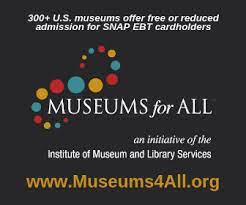When I moved to Cleveland in 2000, I was three months pregnant and my first two sons were just 6 and 3. Living in the city with children was phenomenal. Edgewater Beach was within walking distance from our home, the downtown library was our branch and my boys regularly roared around the Great Lakes Science Center, especially in winter months.
We also spent many summer afternoons at the Cleveland Botanical Garden’s Hershey Children’s Garden. Created in 1999, the children’s garden was the first of its kind in Ohio and an impressive addition to the more traditional botanical garden, which was free to the public, mostly outdoors and closed in the winter.
Magical is a clichéd modifier, but when young children are allowed to engage with the elements — digging in sand, filling containers from an old-fashioned pump so as to water plants or each other, sitting on a floating section of a bridge on a pond filled with frogs — most are actively delighted.
On a blanket spread on a grassy hillock, I’d unpack sandwiches, fruit and water. While my baby sometimes napped, his brothers climbed the treehouse or tried to catch frogs alongside children from a wide variety of ethnic and economic backgrounds.
Then, in 2003, the Cleveland Botanical Garden began a major expansion. An underground garage was added along with two massive interior biomes, one featuring desert plants, the other rain forest flora.
As a result, the gardens are now open all year, but they are no longer free. Admission is $16 for anyone 13 or older and $12 for children ages 3 to 12. An annual membership for a family of four is $100. And because it now has a cafe indoors, picnicking is no longer allowed in the children’s garden.
For all that was gained, the loss of access to the botanical gardens for many people, especially children, was crushing.
Ample research highlights the benefits of educational institutions such as museums, libraries and historical sites for children. Achievement in reading, math and science are higher in children who visit them by the time they are in kindergarten. These children also have, according to a 2018 study conducted by the U.S. Department of Education, “a greater appreciation of art, higher tolerance, and stronger critical thinking skills.”
But research also shows that children in more affluent families are far more likely to visit these institutions. And the greater income inequality is in any given state directly correlates with a greater disparity in attendance.
In many columns on holiday gift giving, I have encouraged the gift of museum memberships to young families because I know firsthand how spending time at such institutions imbued the lives of my now-adult sons. They regularly tell me so and, yes, also rue the changes at the Hershey Children’s Garden.
But not all families have relatives who can afford to purchase a gift membership. In a perfect world, we as a society would support these institutions and make them free to all. Everyone benefits when children have experiences that engage their imaginations and intellects.
This is why I was pleased to discover a discount program when I recently took my youngest two children to the Boonshoft Museum of Discovery in Dayton. At the entrance counter, an employee listed the various ticket discounts since we are not members.
The list was mostly predictable — military members, AAA members and the like. She then asked if we received any food assistance, telling me that with a valid SNAP card (food stamps) up to four members of a household can gain admission for just $2 a person.
Boonshoft is a member of Museums for All, an initiative of the Institute of Museum and Library Services. According to their webpage, museums4all.org, “Museums for All invites low-income visitors to feel welcome at cultural institutions.”
Created in 2014-2015, Museums for All includes over 900 institutions in all 50 states, Washington, D.C., and the Virgin Islands, all offering reduced admissions ranging from free to $3 for up to four household members.
The program is only effective, however, if those who need it know it exists. I encourage school districts to make families aware of Museums for All and identify which area institutions are participating members.
Over 60 Ohio institutions are participating members. Here in Akron these include the Akron Zoo, Stan Hywet Hall & Gardens, Hower House, Hale Farm & Village, Akron Art Museum and Akron Children’s Museum.
And just up the road, the Cleveland Botanical Garden is also a member of Museums for All and, therefore, once again an inclusive institution where cost does not prevent any child from delighting in play at the Hershey Children’s Garden.
This was first published in the Akron Beacon Journal on Sunday, September 18, 2022.

